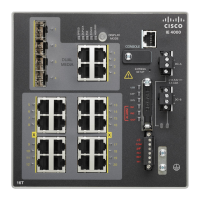476
Configuring SPAN and RSPAN
How to Configure SPAN and RSPAN
Creating a Local SPAN Session and Configuring Incoming Traffic
4. monitor session session_number
destination {interface interface-id [, | -]
[encapsulation replicate]}
Specifies the SPAN session and the destination port (monitoring
port).
session_number—Specifies the session number entered in step 3.
Note: For local SPAN, you must use the same session number for the
source and destination interfaces.
interface-id—Specifies the destination port. The destination
interface must be a physical port; it cannot be an EtherChannel,
and it cannot be a VLAN.
(Optional) [, | -]—Specifies a series or range of interfaces. Enter
a space before and after the comma; enter a space before and
after the hyphen.
(Optional) encapsulation replicate—Specifies that the
destination interface replicates the source interface
encapsulation method. If not selected, the default is to send
packets in native form (untagged).
Note: You can use monitor session session_number destination
command multiple times to configure multiple destination ports.
5. end Returns to privileged EXEC mode.
Command Purpose
Command Purpose
1. configure terminal Enters global configuration mode.
2. no monitor session {session_number | all |
local | remote}
Removes any existing SPAN configuration for the session.

